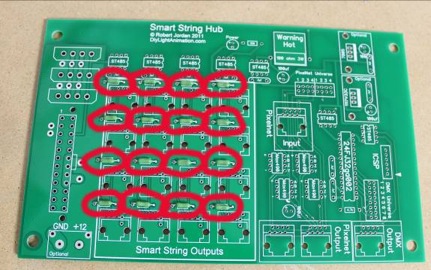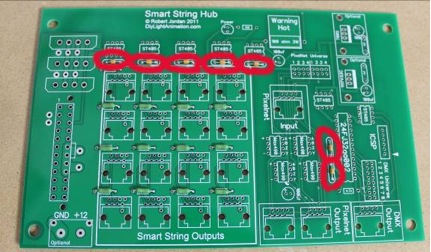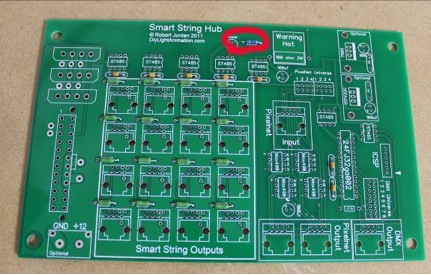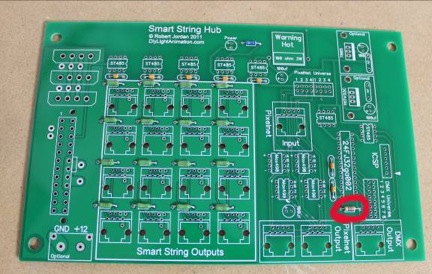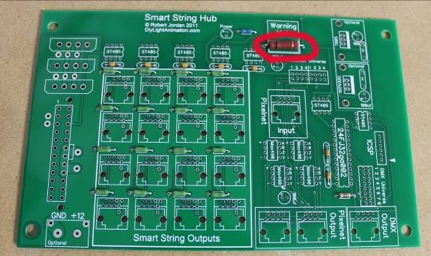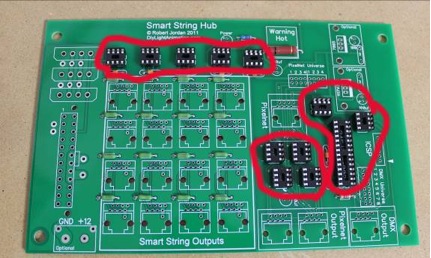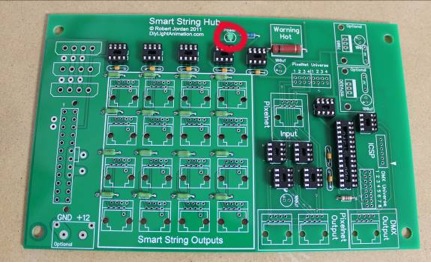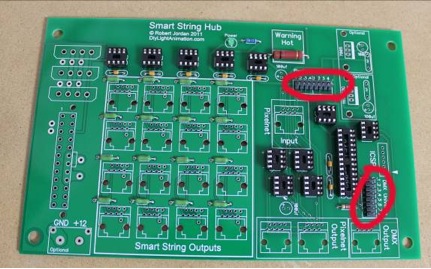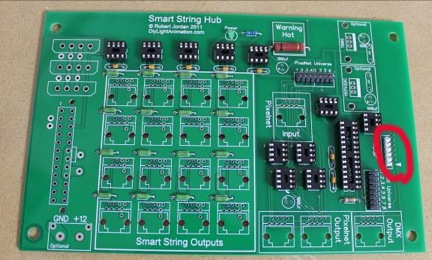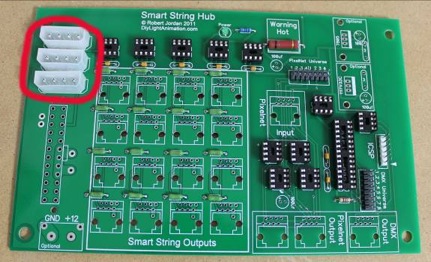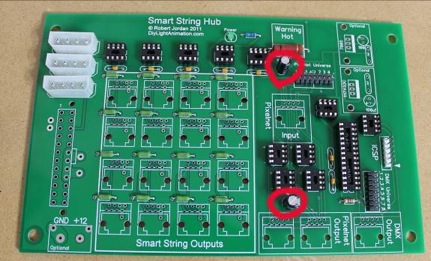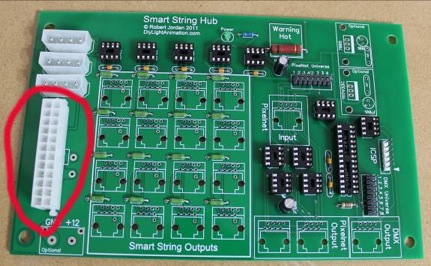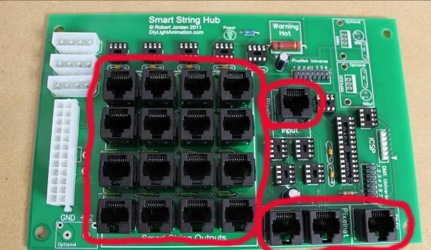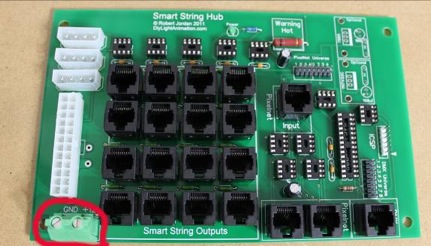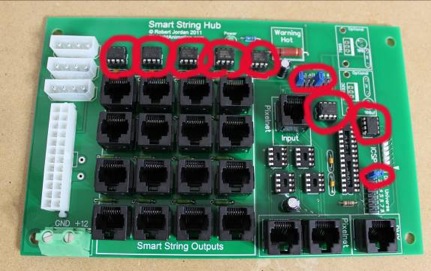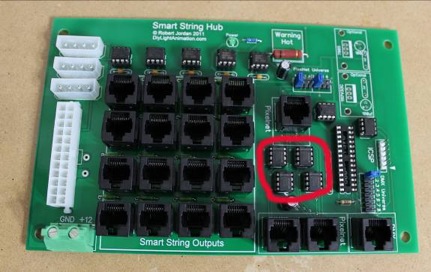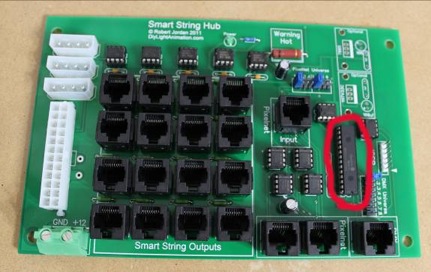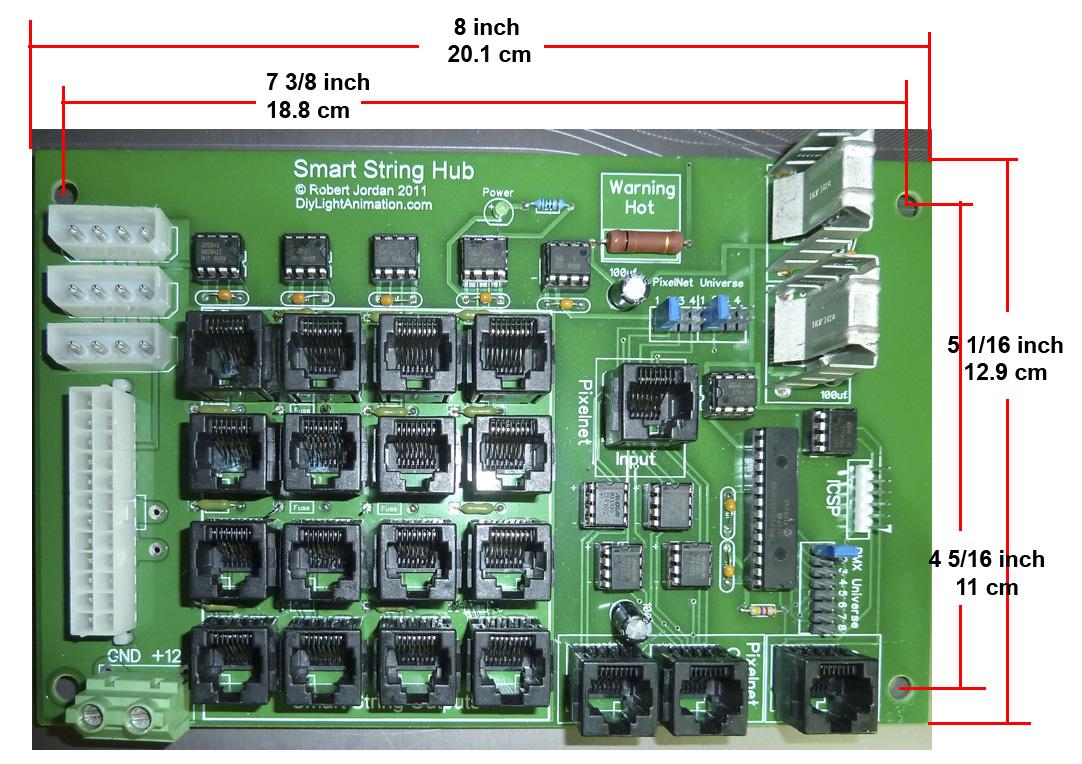Manual SSHub
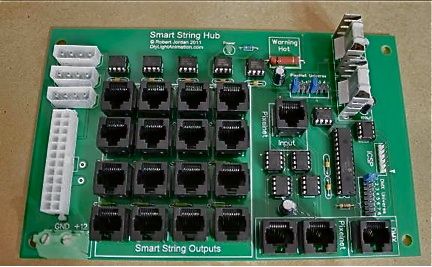
Contents
Introduction
Thank you for choosing to build the Lynx PixelNet 16 Port Active Hub Hub. I believe you will be happy with your choice.
WARNING! This Device has been design for personal use as a means of education and entertainment. As such it is not rated, tested, or approved for any use and I assume no responsibility in the use or operation of this equipment or for the accuracy of any information made on part of itself. This device has been design for my use and my use only. This is simply an explanation of how I built my own personal one for informational purposes. I make no warranties written or otherwise to it. It should be considered an experimental device with possible unknown characteristics.
Preparing to Build
The next thing we want is to make sure you are up to speed on soldering and electrostatic protection of the components in your kit. If you are not an experienced printed circuit builder I recommend you visit the site:
http://curiousinventor.com/guides/How_To_Solder
And check out there extremely good video on soldering correctly. Even if you are an expert it is a good video to watch.
Another issue you must be aware of is that some electronic components can be damaged easily by electrostatic charges that can build up in you or your equipment. We have all been shocked by walking on carpet and grabbing a door knob before. This is electrostatic charge in action. It takes much less than this to hurt some of our parts. If you are unfamiliar with procedures to protect from this please use the internet to research it before opening your parts up. You can damage your parts if handled wrong!
You will need a few tools that do not come with your kit to build the SS Hub. You will need a good soldering iron. I can not stress enough that a good soldering iron makes a big difference in these projects. The little 15w cheap irons are more apt to hurt your parts by taking too long to get the parts up to soldering temperature than a good iron which can bring it up to temp very fast. Remember it is more how long you keep the part hot than it is how hot you get it within reasonable soldering temperatures. A good soldering iron can be had for very reasonable amounts of money. You can purchase one for $30 to $60 dollars. Most anything that is called a soldering station where there is a temperature control separate from the iron itself will more than likely be fine but make sure it is rated for more than 15 watts. I myself use a cheap Weller like this one
http://www.amazon.com/Weller-Soldering-Station-WLC100-120V/dp/B000ICEMYA
It works fine and is very inexpensive. I even saw this model on sale at Sears. Radio shack has a very nice looking digital model on sale but be careful as it does not allow you to replace the tip. Tips are a part that wear out and need replacing from time to time. While we are on tips get some. I recommend you get the smaller chisel shape as this work very well for all around board building.
You need solder so buy some. I recommend the .032 size as the larger sizes tend to cause you to put too much solder on. How much? Go ahead and get a 1 lb spool as it’s cheaper in large volume and you will go through it faster than you think. Make sure you are getting rosin core for electronics they make some solder for plumbing that has acid as the core this is a bad mistake to make.
You need some work area to work with good lighting. Do not attempt to solder circuit boards in poorly lighted areas. If you wear reading glasses go get them you will want them I promise you. I recommend a set of helping hands like this: http://www.radioshack.com/product/index.jsp?productId=2104639&cp=&parentPage=search
Step 1
Install 16 5amp fuses (they are green and a little larger than the .1uf capacitors) as shown above. They have no polarity so you can put them in any direction. Flip the pcb and solder them in then trim the excess leads off short.
Step 2
Install seven .1uf capacitors as shown above and solder them in place then trim the leads. They do not matter which direction they are put in.
Step 3
Install the 150 ohm resistor in place and solder/trim.
Step 4
Install the 4.7K ohm resistor in its marked location as above and solder/trim.
Step 5
Install/solder/trim the 100 ohm 3 watt resistor in place as shown.
Note: If you received a coop kit on the first coop please be aware you have the wrong resistor. I accidentally sent you a 15 ohm instead of a 100 ohm. Do not use this, it will over heat and desolder itself from the pcb. Please pm me if this is the case and I will fix you up with a replacement resistor of the correct value.
Step 6
Install both the 8 pin and the 28 pin sockets as shown. Make sure to put the notches in the correct direction as marked on the pcb. These sockets have kinked leads that lightly lock the socket to the pcb so you can turn them over to solder without them falling out. This is a nice feature but requires extra caution as the pins can be bent under the socket if care is not taken inserting them. Check before you start soldering that all pins are sticking through the back of the pcb the same. If not correct before soldering.
Step 7
Install the Led with the longer lead in the hole marked with the + sign on the pcb and solder.
Step 8
Insert the 4 eight pin headers as shown and solder then in place.
Step 9
Insert the six pin ICSP header and solder in place.
Step 10
Now install the three 4 pin power connectors. They must be inserted the correct direction.
The housing of the connect have cut off corners on one side and the marking on the pcb must match the same way. Solder them in it will take some extra heat so turn up your station some.
Step 11
Install the two 100uf capacitors on the pcb as shown. They must put in the correct direction so find the black strip with the - sign on the side of the capacitor and make sure it is on the opposite side from the side mark + on the pcb.
Step 12
Install the 24 pin connector as shown and solder into place.
Step 13
Install 20 RJ45 jacks by popping them on the pcb and then soldering 8 pins on each of them. Take your time and do a good job. Do not short any pins as there is power applied to them.
Step 14
If you are installing the optional 12v kit remove the power connector from it and solder it into place. Make sure the holes for the wire to insert into is pointing away from the pcb.
Step 15
Install the Blue shunts on all pins marked #1 to start out. This sets the pcb to use pixelnet universe #1 and to output the first 512 channels as DMX.
Now carefully insert all 7 ST485BN chips in their sockets as shown insuring the notch marking pin #1 is matched to the pcb marking. They are not all the same direction.
Step 16
Now do the same with the MAX490 chips.
Step 17
Insert the 28 pin Pic chip in its socket as shown being careful to not bend any pins.
If you are installing the 12v optional kit you can install the extra parts where marked.
Congrats you have completed a SS active Hub.
RJ
